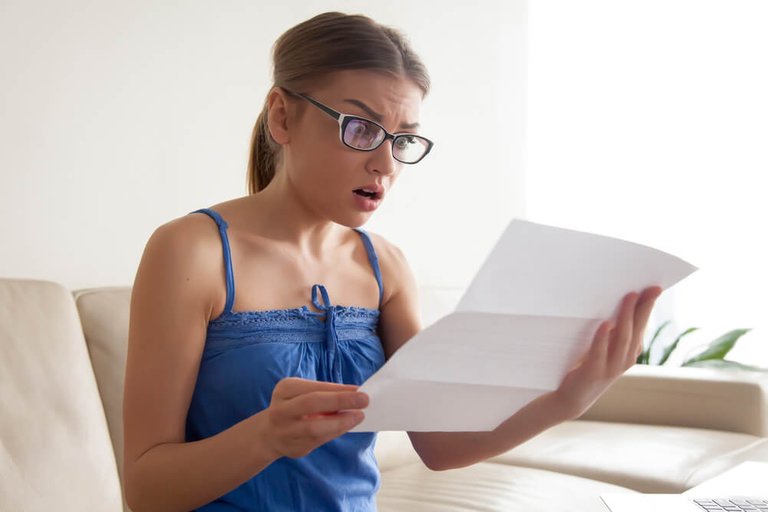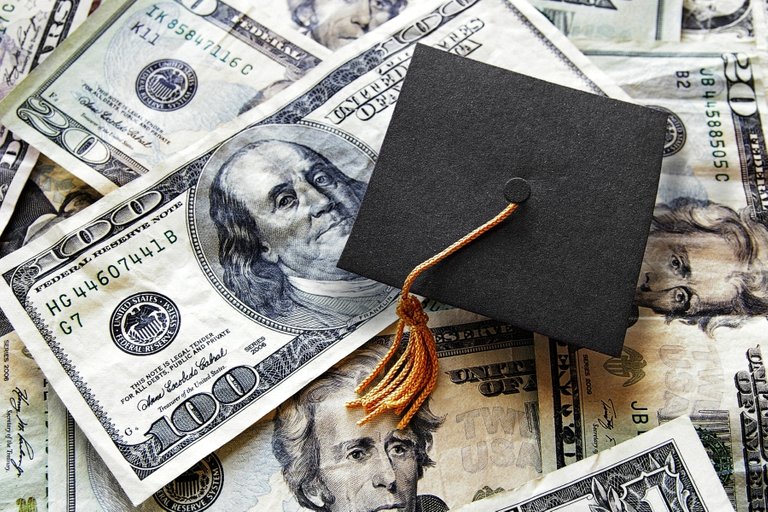This year student debt reached unprecedented levels. According to the Federal Reserve, student debt has now exceeded $1.5 trillion. Each new graduate walking away from his or her alma mater owes about $28,400 — but that’s just the average, many borrowers owe much more.

So there’s clearly a problem. Student loans have overtaken both auto loans and credit card debt, and are second now only to mortgages. When considered beside stagnant wages, it’s clear that this is a recipe for disaster.
Many student loan borrowers have no choice but to default, and according to a recent survey, as much as 20% of all borrowers are behind on monthly payments. This number is only expected to grow and is expected to be as high as 40% by 2023.
Right now, 1 million people each year default on student loan payments. But do these borrowers fully understand the consequences of doing so? More importantly, do they understand the steps they could have taken to avoid default in the first place?
How long does it take for a loan to go into default?
For most student loans, borrowers go into default when they have not made any payments for 270 days. When this happens, the loan is assigned to a debt collector who will then begin contacting daily to receive payment.
If you have a private loan, check your loan paperwork. Sometimes private loans have a different length of time before a loan is considered in default. Usually, the term is 270 days, but read through the fine print to be sure.
What happens when you default on student loan payments?
When you default on your student loans, it negatively impacts your credit for up to seven years. This will make it much harder to get approved for things like new credit cards, auto loans, and mortgages in the future. It may not sound like too big of a deal right now, but just wait. One day it will likely put you in a bind.
Also, expect to see the total balance of your student loans increase. This is mostly because of unpaid interest, but is also because of fees tacked onto your account related to your default. These fees have to do with debt collection services the lender had to hire or legal services it had to obtain because of your prolonged delinquency.
If it’s a federal student loan you default on, there are a few more things that could happen. First, you will be unable to defer any payments in the future and will also be ineligible to sign up for any alternative payment plans down the road. Secondly, you’ll no longer be eligible to obtain additional financial aid in the future should you decide to return to school.
Again, it may not sound like a big deal now, but more and more companies are requiring degrees higher than a bachelor's. If you need to go back to school, you’ll have to either get a private loan (which will then be harder because of your credit report and score) or pay all cash.
Do some states have more consequences for defaulting than others?
If you have a choice about whether to default or not, look at how defaulting will affect you in your state. In some states, the consequences can be quite severe. Depending on where you live, a defaulted student loan could result in:
- Losing your professional license
- Having your driver’s license suspended
- Losing your diploma
- Losing your hunting and fishing license
- Losing camping and park permits
And in some states, such as Tennessee, if you lose your professional license, there is a fee to get it back (which can be as high as $1,500) even after you have caught back up on student loan payments.
If you’re unable to make payments, make sure you know what actions your state may take against you if and when you stop.
How long will a student loan default affect your credit?
It depends on what kind of student loans you have. Private student loans are treated just like any other kind of negative mark on your credit report. As such, they may be listed on your credit report for as long as seven years.
This means that after seven years have elapsed from your last missed payment, the negative entry will be removed from your credit report and your credit score will improve.
If you default on a Perkins loan, the negative entry will stay on your report until the entire loan has been paid off. Regardless of whether seven years have passed or not, the negative entry will stay on your credit report until you have paid off the loan in full. Note that this is an unusual case, and does not hold true for all government-issued student loans.
Is bankruptcy an option?
All education based loans are difficult to discharge via bankruptcy. Plus, bankruptcy in and of itself is difficult and costly. When you factor in that it’s in an effort to discharge student loan debts, it’s even more challenging.
The only way to discharge federal student loans through bankruptcy is if you prove that you are under “undue hardship.” This means that you have to prove that you are unable to pay back your federal student loans in what is called the Brunner Test.
It’s a hard test to pass because you must show that:
- Your financial distress is more than likely to continue for most of the repayment period.
- Up until you were unable to make payments, you made a good effort to repay your student loan debt.
- Based on your current and likely future income and expenses, you cannot and will not be able to maintain an acceptable standard of living for yourself and dependents if you must continue to make payments.
Most people who attempt to discharge their student loan debts via bankruptcy are unsuccessful. Successful candidates are usually 50 years or older, and have made payments on their loans for a number of years.
What options are there if you can’t make any payments?
For this, it depends on what type of student loan you have. Let’s talk about federal loans first.

Federal Student Loan Options
Federal student loans have a variety of payment plans to suit borrowers’ needs. A description of each payment plan can be found here. There are currently eight plans in total. For example, there is the Income-Based Repayment Plan (IBR) where your monthly payments are either 10% or 15% of your discretionary income, and there is the Pay As You Earn Repayment Plan (PAYE), where your monthly payments are only 10% of your income.
Of course, for each plan, there are qualifications you must meet in order to be eligible, but if you are honestly having trouble making payments this is not something you need to worry about. If you are confused as to how to proceed, don’t be afraid to contact the Federal Student Aid office of the Department of Education directly.
The office is dedicated to helping borrowers make their monthly payments more affordable. If you’ve had to default on your federal student loans, this is the place to contact. Helping you is literally their job.
Deferment and forbearance are also options, but getting onto a more affordable monthly payment plan is the best option if you have a steady source of income.
Private Student Loan Options
The first thing to do if you can’t afford to make payments on your private student loans is to pick up the phone and call your lender. Tell them your situation and see what they have to say. Most lenders out there will try to work out a plan with you. Some companies, for example, will put your loan into forbearance or deferment if you are unemployed and actively looking for work.
Loan forbearance is when your lender temporarily allows you to stop making payments on your loan for up to 12 months. The downside to this is that your account will continue to accrue interest while it’s in a state of forbearance. It provides temporary relief, but may hurt you in the long run once you are able to get back on your feet.
Loan deferment is when you’re able to stop making monthly payments without the downside of accruing interest. It’s the better option of the two, but is harder to qualify for. Automatic eligibility happens when you’re enrolled in a postsecondary school, are disabled, or are on active duty with the military. However, it doesn’t happen unless you apply.
Lastly, consolidating and refinancing may be a great option for you. If the interest rate you have on your loan is high, you may qualify to refinance your loan at a lower interest rate if you have a decent credit score . Choose a loan term and monthly payment amount that fits your financial situation better, and your monthly student loan payments may not take such a huge chunk out of your monthly income.
Defaulting is rarely a good idea.
Many Americans sadly don’t have a choice when it comes to whether or not to default on their student loans. Regardless of whether it’s an option or a fact of life, most borrowers need to pick up the phone and call their lender when they’re unable to make payments. Depending on where you live, the consequences of defaulting could be disastrous. Thankfully, there are alternatives out there that can help, but you must call your lender first to learn of them.